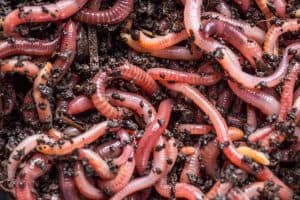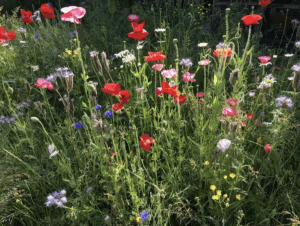The soil is literally at the root of everything that we grow and affects everything that we eat. It is such an important entity and yet often ignored. I started my 10 week soils module in April and we began by each student analysing the soil from their garden. Incredible that a lot of people think it’s boring but if you don’t do a teeny bit of research into what’s going on under the lawn and flower beds you will not know what can grow there successfully and how to change it.
Your Garden Soil
When I visit gardens and ask about the soil conditions the reply is normally ‘good soil’, ‘rubbish soil’, wet, dry, clay, loam and many other indications that there is a complete lack of knowledge about what is actually going on. There are a few very simple steps you can do to learn the basics before you go plant shopping.
Acid or Alkaline?
The first thing to do is a soil pH test to determine the acidity. Kits can be picked up readily at garden centres and I bought 100 tests online for my eager students. The pH scale is from 0 to 14 with 7 in the middle. Most plants thrive in a soil pH of 6.5 with a few variations either side. Some plants are very particular and if you have happy, lush green Camellias, Pieris and Rhododendrons in your garden your soil pH is likely to be 6.5 or below. If it’s higher than 7 it’s unlikely this group of plants will survive and if they are yellow and feeble this will be the reason.
Sand, silt or clay?
Most soils are a mixture of sand, silt and clay and this can easily be determined by a primary school experiment. Take a soil sample from a few inches deep and half fill a jam jar. Fill with water and screw on the lid before shaking to mix up and leave to settle. The sand particles will drop to the bottom, the silt will then settle slowly onto the top of the sand and the clay will remain in suspension making the water look muddy. Clay particles will eventually settle after a few days so you can clearly see defined layers. This may vary in different parts of your garden.
Each soil combination has a direct effect on workability, soil temperature, drainage, moisture retention, nutrition and plant health.
Soil texturing test
This is where you get muddy and gloves are not an option!
Put a little amount of soil in the palm of your hand and wet it. Rub it between thumb and forefinger. If it feels gritty that’s the sand, silky and soapy is the silt element and stick is clay. If it holds together in a ball it’s like to have more clay particles than sand and vice versa.
Improving the Structure
Soil texture can’t really be changed but you can improve the structure for healthier plant growth by adding organic matter such as well rotted manure, garden compost, leaf mould, mushroom compost etc. but these too all have different properties and varying actions depending on your soil type. Don’t be tempted to use multi-purpose compost as that’s for potting and very often peat based.
What it all means
Once you have done these basic soil tests you will then have an idea how your soil behaves throughout the year and can start to understand why things have gone wrong in the past and why certain plants have thrived. It will, hopefully, help you to be more selective with the plants you buy. Garden centres can be very tempting, we all impulse buy!
Right plant right soil!
Cathie’s Gardening School Services
Consultancies and mentoring sessions are in full swing so if you would like some help and advice in your own garden let me know. CGS is running the soils module until July and then in September we’ll be doing plant identification and classification.




